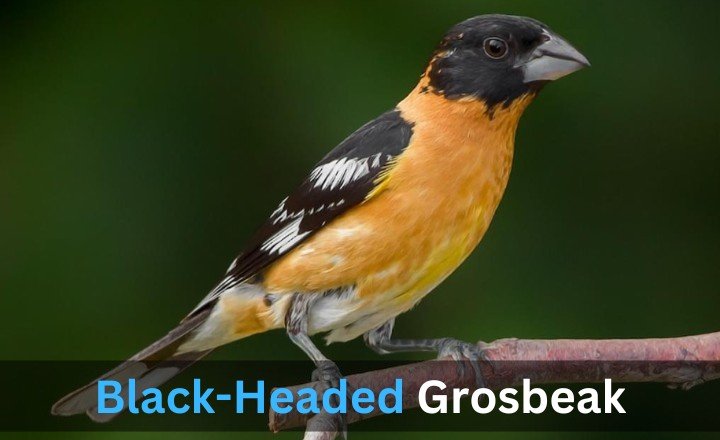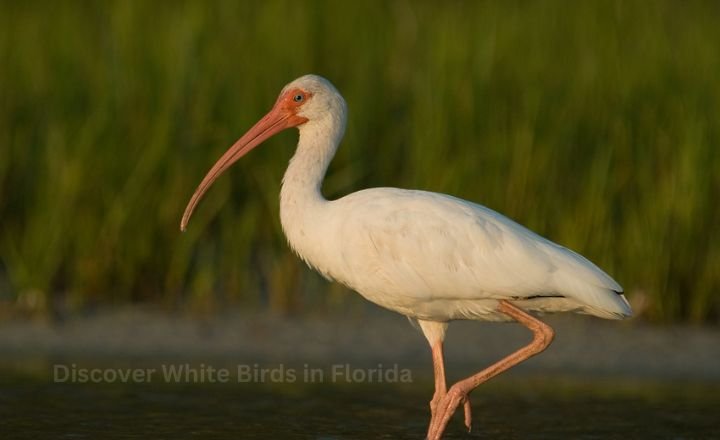5 Types of Orange and Black Birds in Colorado (With Pictures)
As a birdwatching enthusiast, I often find myself captivated by the vibrant hues that nature paints across the skies of Colorado. Among these colors, it’s hard to overlook the striking combination of orange and black graces our feathered friends. From the melodic calls of the Orchard Oriole to the bold presence of the Black-headed Grosbeak, these birds offer a spectacular visual feast against our stunning mountainous backdrop. Each sighting feels like uncovering a piece of art in its natural form a reminder of how wondrously diverse our avian companions can be.
In this article, we’ll explore some of Colorado’s most fascinating orange and Black Birds, delving into their behaviors, habitats, and unique characteristics that make them stand out in a crowd or rather, in a flock!
Overview of Orange and Black Birds
Colorado is home to a vivid array of avian species, among which orange and black birds stand out for their striking aesthetics. The Bullock’s oriole captures attention with its vibrant plumage that contrasts dramatically against the green of its natural habitat. These birds are typically found in riparian areas during summer, flitting through the trees, creating melodious tunes that resonate with the essence of Colorado’s wilderness.

In addition to orioles, Colorado boasts striking blackbirds such as the Red-winged Blackbird, easily recognized by its bold yellow shoulder patches. These gregarious birds thrive in wetland environments and contribute to an ecosystem brimming with life. Amidst this colorful avian tapestry are also lesser-known White Birds like the American Egret and Snowy Egret that bring a different elegance to the landscape; their snowy feathers contrast vividly against dark marsh vegetation.
Bullock’s Oriole
It is a striking avian gem found primarily in western North America and showcases a dazzling palette of bright orange and black. Often mistaken for the more common Baltimore Oriole, Bullock’s distinct coloration and melodious song set it apart. These birds are not only visually stunning but also play a crucial role in their habitat by engaging in a symbiotic relationship with flowering plants; as they feed on nectar, they help pollinate various blossoms.

Unlike Finches that often occupy similar feeding niches, Bullock’s Orioles have adapted to thrive in diverse environments ranging from open woodlands to urban gardens. Their diet primarily consists of fruit and insects, providing an interesting contrast to finches which predominantly consume seeds. These orioles are known for their remarkable craftsmanship when building nests; the females create intricate hanging structures that can sway gently with the breeze an adaptation that may deter predators.
American Redstart
It is a striking gem among Brown Birds and captivates birdwatchers with its vibrant orange and yellow plumage contrasting against its otherwise understated surroundings. Often spotted flitting through foliage in search of insects, this warbler’s dynamic foraging behavior is not just a feast for the eyes but also serves an ecological purpose, it helps control pest populations within their habitats. Their energetic tail flicks are a signature move that allows them to flush out hidden prey, making their hunting style as entertaining as it is effective.

While many associate the beauty of songbirds with colorful coats, it’s intriguing to recognize how contrasts play an essential role in survival. The American Redstart’s bold colors provide a dual advantage: they attract mates during the breeding season while ensuring visibility against the drab backdrop of autumn leaves and twilight skies.
Western Tanager
It is a striking bird that captivates anyone lucky enough to spot it, adorned in vibrant yellow, fiery orange, and deep black plumage. This color palette not only serves as a visual feast but also plays a crucial role in the mating rituals of males during the spring months. By singing melodious tunes and flaunting their bold colors, they attract females while simultaneously marking their territorial boundaries. Observing this display offers an intimate glimpse into nature’s complex courtship behaviors.

Beyond aesthetics, the Western Tanager’s migration patterns are equally fascinating. These birds travel thousands of miles from their breeding grounds in North America to wintering sites in Central America, showcasing remarkable navigational skills that scientists are still trying to fully understand. Their journey underscores environmental changes particularly habitat loss that can significantly impact their populations over time.
Orchard Oriole
It is a striking bird often overshadowed by its more flamboyant relatives, showcasing the beauty of subtlety in nature. With its vibrant orange and black plumage, this small songbird captivates those lucky enough to spot it in its preferred habitats open woodlands, gardens, and orchards. Unlike many of its counterparts, the Orchard Oriole weaves intricate nests that hang like pouches from tree branches, an architectural feat that not only offers protection for its young but also emphasizes the avian creativity found in nature.

Despite being primarily insectivorous and frugivorous during summer months, these orioles exhibit fascinating adaptability in their diet as seasons change. In wintering grounds across Central America and Mexico, they may feed on nectar and sugar-rich fruits a behavior that aids crucial pollination processes within their ecosystems.
Observers often note how Orchard Orioles share their habitat with various species including Hawks while raptors may dominate the skies above as apex predators, the orioles thrive below under their protective cover. This delicate balance underscores the interconnectedness of avian life where predatorial presence shapes behaviors across different ecological niches.
Black-Headed Grosbeak
It is a small and vibrant bird, that brings color to the natural tapestry of North American landscapes during its breeding season. Males boast striking black and bright orange plumage, making them easily identifiable as they flit through orchards and open woodlands. Their sweet, melodious song adorns mornings in rural areas, yet this delightful tune hides a fascinating secret: the formidable nesting strategies these birds adopt to protect their young from predators such as snakes and even Owls.

An intriguing aspect of the Orchard Oriole’s behavior is its unique approach to foraging. Unlike many birds that primarily rely on insects or seeds, these orioles have a penchant for nectar and not just for flowers! They often visit artificial feeders filled with sugar water, aiding in cross-pollination while attracting other wildlife observers’ interest.
‘Orange and Black Birds’ Conclusion
The striking contrast of orange and black plumage found in various bird species not only captivates birdwatchers but also plays a crucial role in their survival and mating rituals. These vibrant colors often serve as important indicators of the birds’ health and vitality, making them attractive to potential mates. Understanding the behaviors and habitats of these birds can enhance our appreciation for biodiversity and the delicate ecosystems they inhabit. As we continue to study and protect these remarkable creatures, we gain insights into the broader impacts of environmental changes on wildlife.
FAQs
What Colorado Bird Has Black Spots?
One of the most intriguing birds in Colorado known for its distinctive black spots is the American Robin. This beloved avian often graces lawns and parks across the state, effortlessly blending its vibrant orange-red breast with a dappled back adorned with dark speckles.
What is the Official Bird of Colorado?
The official bird of Colorado is the Lark Bunting, a striking black and white songbird that captivates both nature enthusiasts and casual observers alike.
Are There Robins in Colorado?
Yes, there are robins in Colorado, and their presence is a delightful harbinger of spring. The American Robin, known for its vibrant red-orange breast and cheerful song, migrates to Colorado as the winter frost recedes.






